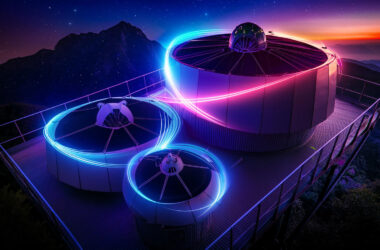NASA and the ESA have announced that the alignment of the James Webb Space Telescope is now complete.
The Space Agencies have confirmed the telescope is now capable of capturing crisp, correctly focused images with each of the crafts 4 onboard science instruments.
The announcement marks the seventh and final stage of the telescope alignment. Webb is now ready to move forward into its next and final series of preparations, known as science instrument commissioning.
This final process will see the team setting up and testing each of the instruments. It is expected to take about two months and after that JWST will be ready for full scientific operations.
NASA has released a series of images that showcase observatory’s full field of view.

These engineering images (above) show a sharply focused stars in the field of view of each instrument demonstrate that the telescope is fully aligned and in focus.
The test images show part of the Large Magellanic Cloud, a small satellite galaxy of the Milky Way made up of hundreds of thousands of stars.
If you look closely you will see that the image depict the relative arrangement of each of Webb’s instruments across JWSTs focal plane. Each image is capture from the on-boards instruments pointing at a slightly offset part of the sky relative to one another.
How many instruments does the James Webb Space Telescope have?
The three imaging sensors onboard the JWST are the –
- NIRCam – images shown here at a wavelength of 2 microns
- NIRISS – images shown here at 1.5 microns
- MIRI – images shown at 7.7 microns, a longer wavelength revealing emission from interstellar clouds as well as starlight
Are you are wondering why we have listed only three imagining – and the JWST has 5 instruments?

The NIRSpec, developed by the ESA, is a spectrograph not an imager but can take images, such as the 1.1 micron image shown above but this is only meant to be for calibrations and target acquisition.
The dark regions visible in parts of the NIRSpec data actually show the device is working well. They are due to the structures of its microshutter array. The microshutter array has several hundred thousand controllable shutters that can be opened or shut to select which light is sent into the spectrograph.
Finally there is an image from the JWSTs Fine Guidance Sensor. This sensor tracks guide stars to point the observatory accurately and precisely. The two sensors will not be used for scientific imaging but instead will be used to take calibration images such as those shown here.
This calibration image data can be used by the team to assess image sharpness and precisely measure and calibrate subtle image distortions and alignments between sensors as part of Webb’s overall instrument calibration process.
The Webb team will now be fully focused on science instrument commissioning ahead of full scientific operations commencing this summer.







